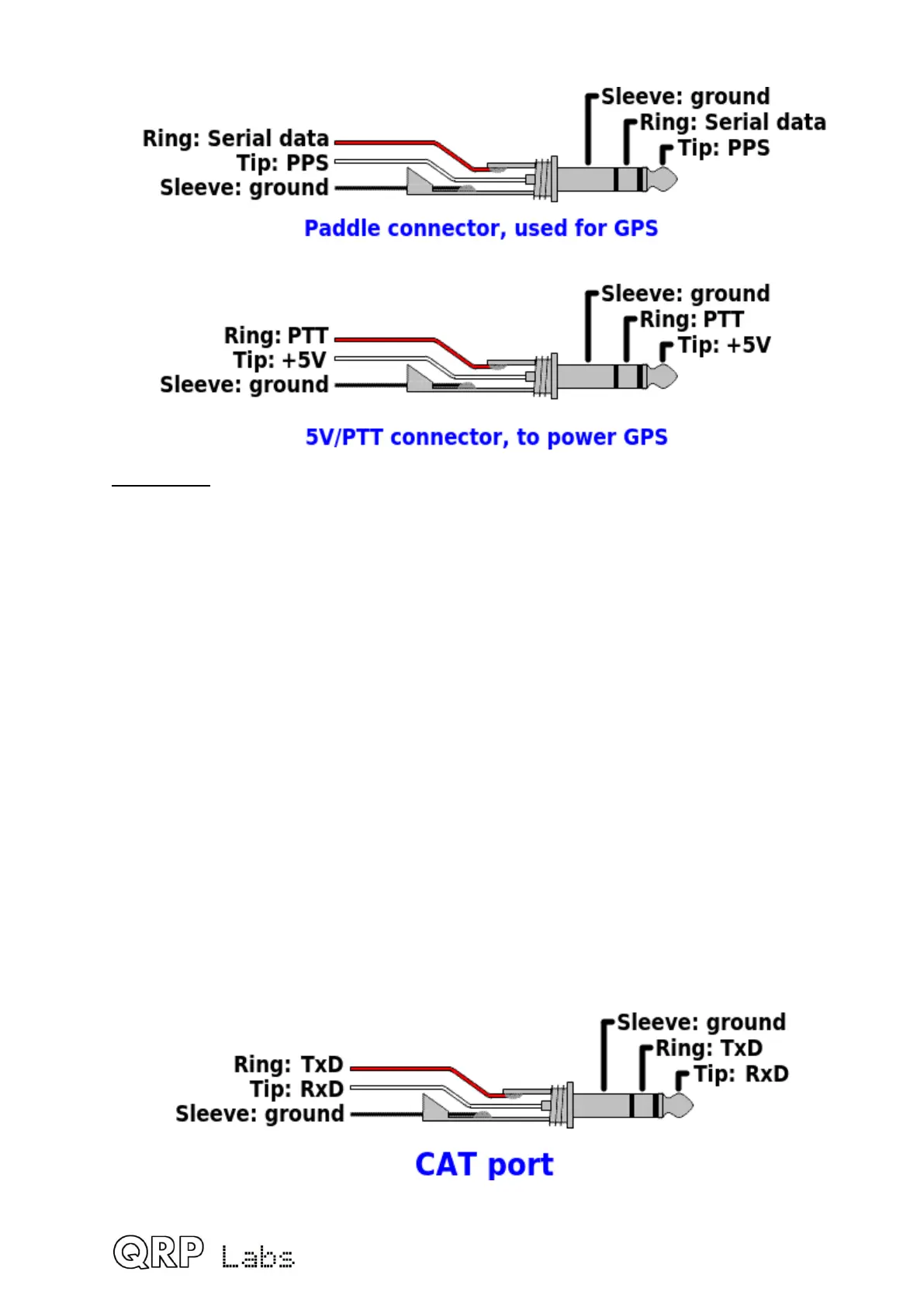The synthesizer section of the circuit diagram is shown here (right). The Si5351A datasheet
dictates the use of a 25 or 27MHz crystal. QRP Labs has always used the 27MHz crystal in
our designs because it allowed us to obtain precise 1.46Hz tone spacing for WSPR
transmissions all the way up to the 2m amateur band (145MHz). Those calculations don’t
work out with the 25MHz crystal. This requirement doesn’t apply to this CW transceiver
design but economics of scale means there are advantages to sticking with the same
component values, all other things being equal!
The Si5351A has a large number of internal 8-bit registers to control the synthesizer
behaviour, and these are programmed by the microcontroller using the I2C serial protocol.
1K resistors R3 and R4 are pull-ups required for the operation of the bus at 400kHz.
The Si5351A chip requires a 3.0 to 3.6V supply (nominally 3.3V) but the rest of this
transceiver’s digital circuits operate with a 5V supply. For the reduction of complexity and
costs, two 1N4148 diodes in series are used here to drop the 5V to a suitable voltage for
the Si5351A. It works well.
There are three outputs of the Si5351A synthesizer and these are all used to good
advantage. The Clk2 output is used to feed the transmit power amplifier, and the Clk0/1
outputs are used to drive the Quadrature Sampling Detector (QSD) during receive. These
outputs can be switched on and off under the command of the microcontroller. This
provides an opportunity for some simplification because the Clk0/1 outputs can be simply
switched off entirely during transmit. This relieves pressure on the transmit/receive switch.
There just cannot be any reception during transmit because there is no oscillator input to
the receive mixer. Conversely, the Clk2 output is switched off during receive.
A feature of the Quadrature Sampling Detector is that either the RF input, or the LO input,
must provide two paths in 90-degree quadrature. This is normally applied at the Local
Oscillator where it can be easily controlled for best performance. So, two oscillator signals
are required, with the same frequencies but a precise 90-degree phase offset. Generating
this quadrature Local Oscillator signal is always difficult. Analogue phase shift circuits have
limited accuracy. Often a divide-by-4 circuit is used, to produce quadrature oscillator
outputs from an oscillator input at 4x the reception frequency. This also creates challenges
particularly as you try to increase the reception frequency to cover higher bands. For
example, on 10m e.g. 30MHz, a local oscillator at 120MHz is required and the divide-by-4
circuit must be able to operate at such a high frequency. Devices such as the 74AC74 can
do so, but pushing it higher into the 6m band cannot be done with the 74AC74.
The Si5351A has a phase offset feature, which is not really very clearly described in the
SiLabs documentation. However, QRP Labs has perfected the technique to put two of the
Si5351A outputs into precise 90-degree quadrature, which is maintained without tuning
glitches as the frequency is altered. It’s a nice development because it eliminates one more
circuit block (the 74AC74 divide-by-4 circuit), again reducing complexity and cost. To the
best of my knowledge this the first time the Si5351A has been implemented in a product
directly driving a QSD with two outputs in quadrature (no divide-by-4 circuit).
The Si5351A section of the circuit also provides 4-way pin header pads providing
connection points for: Clk0, Clk1, Clk2 and Ground; and a 3-way pin header pads providing
connection points for the I2C bus: SCL, SDA and Ground. For clarity these are omitted from
the above diagram.
82
